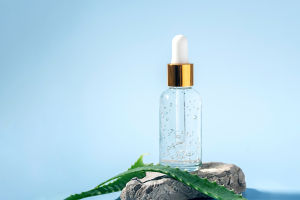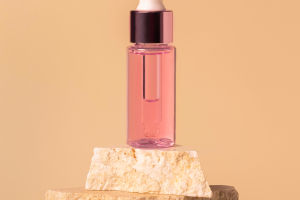Lipstick is a staple in many makeup routines, adding a pop of color and enhancing one’s overall look.
However, not all lipsticks are created equal. Poor-quality lipsticks can lead to various issues, from poor performance to potential health risks.
Recognizing bad lipstick is essential to ensure you are using a product that is both safe and effective. Here’s a comprehensive guide to help you identify bad lipstick.
1. Ingredients Matter
The first step in recognizing bad lipstick is to examine the ingredients list. Harmful chemicals such as lead, parabens, and phthalates can be found in some lipsticks. These ingredients can cause health problems over time, including hormonal imbalances and even cancer. Always opt for lipsticks with natural ingredients and avoid those with long lists of unpronounceable chemicals. Additionally, be wary of fragrances and dyes, as these can also cause irritation and allergic reactions.
2. Smell and Texture
One of the most obvious signs of bad lipstick is its smell. Good-quality lipsticks usually have a neutral or pleasant scent, while bad ones often have a strong, chemical odor. If your lipstick smells off or rancid, it’s a clear indication that it might be expired or made with low-quality ingredients.
Texture is another critical factor. A good lipstick should glide on smoothly and feel creamy. If it feels gritty, sticky, or waxy, it’s a sign that the formula is not well-balanced. A bad texture can lead to uneven application and an uncomfortable wear experience.
3. Pigmentation and Wearability
Pigmentation is a key indicator of lipstick quality. High-quality lipsticks provide vibrant, even color with just one swipe. If you find yourself needing multiple layers to achieve the desired color, it’s a sign of poor pigmentation. Additionally, bad lipsticks tend to fade quickly, requiring frequent touch-ups throughout the day.
Wearability is also crucial. Good lipsticks should feel comfortable on your lips without drying them out. If your lipstick feels heavy or makes your lips feel dry and cracked, it’s likely of poor quality. Matte lipsticks, in particular, can be drying, so look for formulas that include moisturizing ingredients like shea butter or vitamin E.
4. Packaging and Presentation
While packaging may seem superficial, it can tell you a lot about the quality of the product. High-end lipsticks usually come in sturdy, well-designed packaging. If the packaging feels flimsy, cheap, or poorly constructed, it might be a sign of a bad lipstick. Additionally, check for proper labeling, including the brand name, shade, and expiration date. Missing or unclear information can be a red flag.
5. Price and Brand Reputation
While it’s not always the case, the price can often reflect the quality of a lipstick. Extremely cheap lipsticks might be tempting, but they often compromise on quality and safety. Investing in a reputable brand known for its quality and safety standards is usually a safer bet. Researching brand reputation and reading reviews can help you make an informed decision.
6. Performance and Longevity
The performance of a lipstick is a significant indicator of its quality. Good lipsticks should last for several hours without smudging, feathering, or fading. Bad lipsticks, on the other hand, tend to wear off quickly and may leave unsightly residue. Long-lasting lipsticks should maintain their color and finish throughout the day without requiring constant reapplication.
7. Reactions and Sensitivity
Your body’s reaction to a lipstick can tell you a lot about its quality. If you experience any irritation, itching, or swelling after applying lipstick, discontinue use immediately. These reactions can indicate an allergy or sensitivity to one or more of the ingredients, which is more common in low-quality products. Always perform a patch test before using a new lipstick to ensure it doesn’t cause any adverse reactions.
Recognizing bad lipstick is crucial for maintaining the health and appearance of your lips. By paying attention to ingredients, smell, texture, pigmentation, packaging, price, and performance, you can make better choices and avoid the pitfalls of low-quality products. Investing in good-quality lipstick not only enhances your look but also ensures that you are not compromising your health. Remember, your lips deserve the best, so choose wisely and enjoy the confidence that comes with wearing high-quality lipstick.


